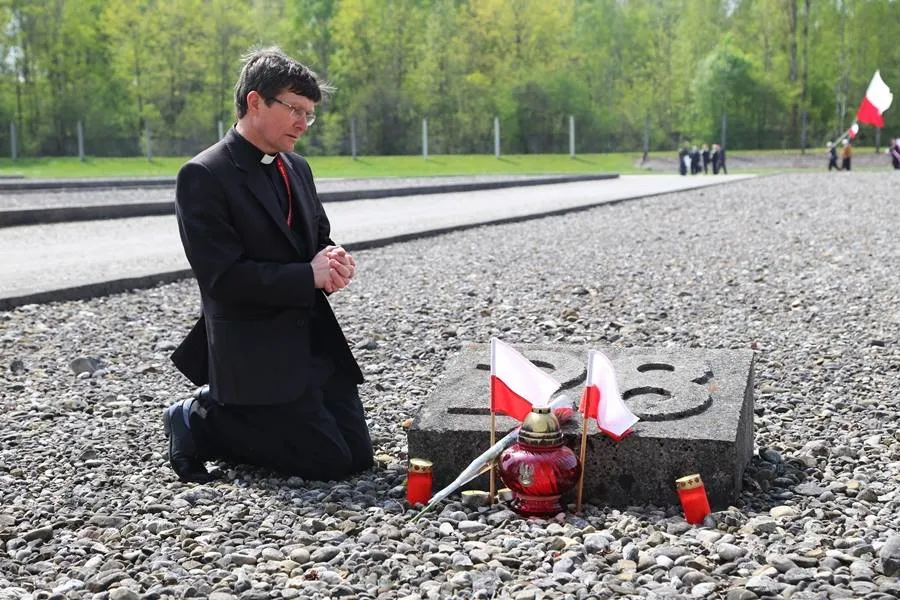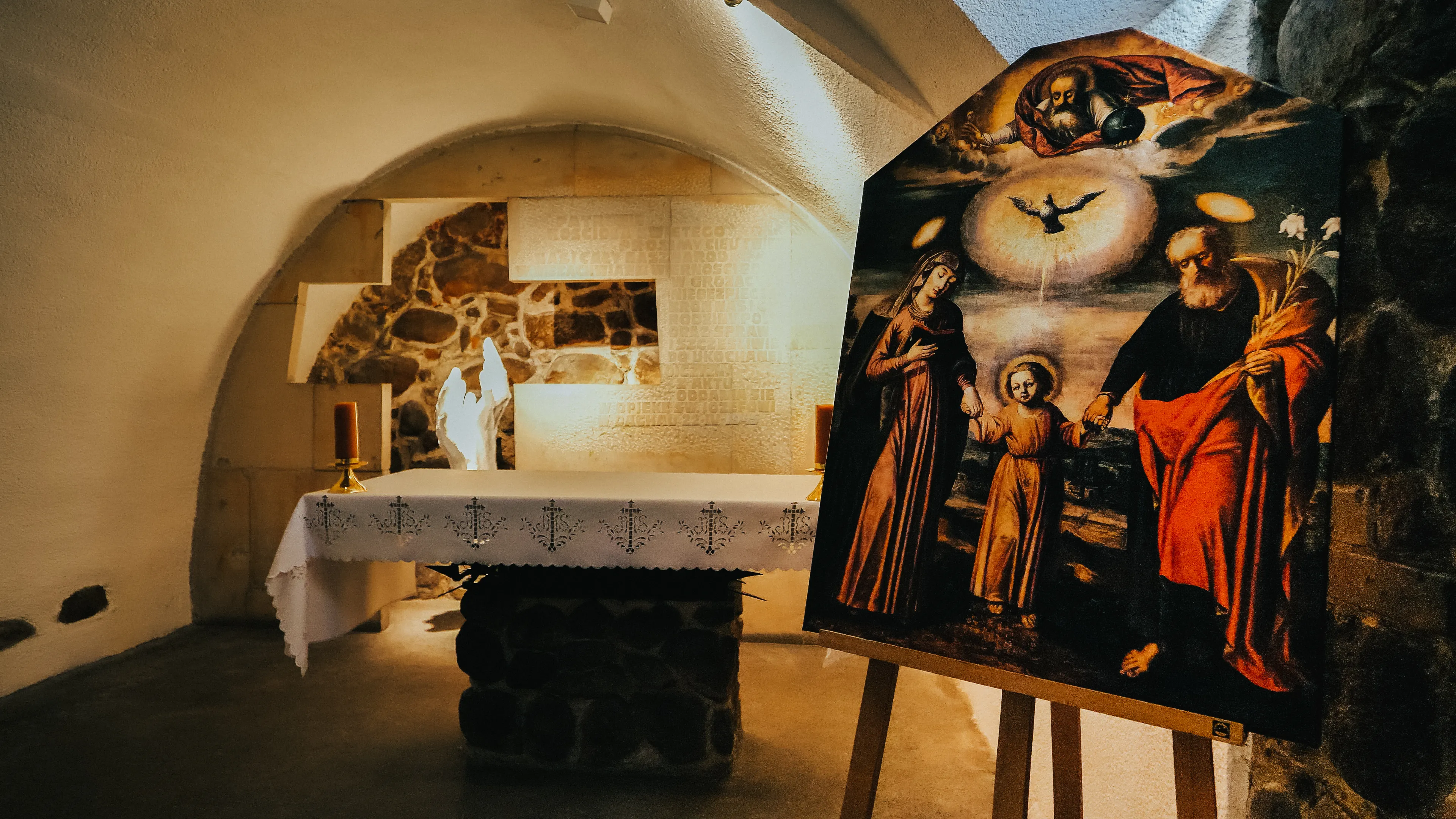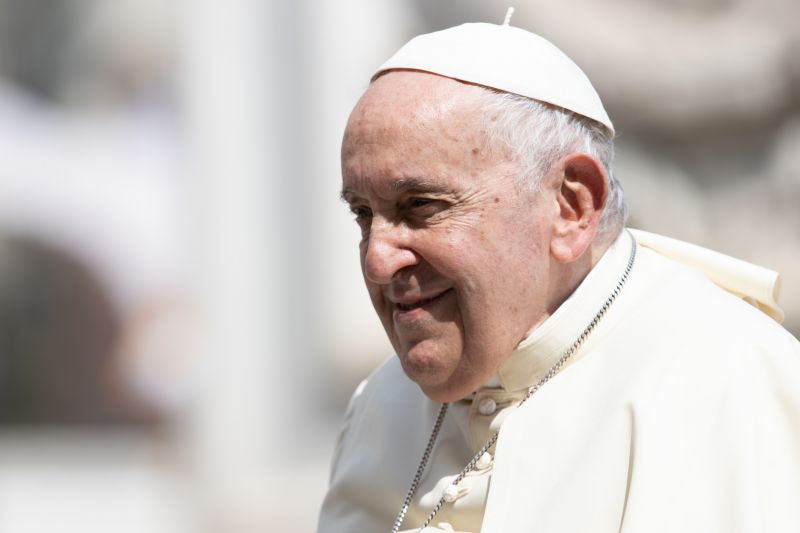.png?w=800)
CNA Staff, Apr 29, 2021 / 04:00 am (CNA).
Catholics in Poland are commemorating the fifth of the country’s diocesan priests who were murdered in World War II as they mark the Day of Martyrdom of the Polish Clergy.
Around 2,000 of Poland’s 10,000 diocesan priests perished during the Nazi German occupation. They are among those remembered on April 29, the day of commemoration of martyred clergy, instituted by the Polish bishops.
Bishop Grzegorz Suchodolski of Siedlce was due to preside at a live-streamed Mass marking the day at the National Shrine of St. Joseph in Kalisz, central Poland, at noon local time.
April 29 is the day on which the U.S. Army liberated the Dachau concentration camp in 1945.
The Nazis killed 868 Polish Catholic clergy at Dachau, once described as “the largest priest cemetery in the world.”
In total, 3,000 Catholic clergy were held at the camp in southern Germany, which operated from 1933 to 1945. Almost two thirds of the priests and bishops came from Poland.

Jan Żaryn, director of the Institute for the Heritage of National Thought, said: “In Dachau, the number of Polish priests murdered there exceeded all other victims from the clergy of other European countries.”
He noted that several influential Polish priests were killed at the camp.
“Blessed Fr. Stefan Frelichowski, a priest who today is the patron of scouts, was among them. He was this symbol of Polish patriotism, of young priests following in the footsteps of such figures like Fr. Ignacy Skorupka,” he said, referring to the chaplain of the Polish Army who died in the Battle of Warsaw in 1920.
“Among the priests murdered in Dachau there was also Blessed Fr. Edward Detkens who was connected with the academic ministry in Warsaw.”
The Polish bishops chose the National Shrine of St. Joseph as the principal location for the commemoration of the Day of Martyrdom of the Polish Clergy because it has a special connection with Dachau.
A week before the camp’s liberation, the priests and monks at Dachau consecrated themselves to St. Joseph, fearing that the guards were planning to murder them before fleeing the advancing Allies. If they were spared, they promised they would make an annual pilgrimage to the shrine in Kalisz.
Just two hours before they were due to be killed on April 29, 1945, a small U.S. Army patrol unit arrived and saved them.
Several years later, the surviving priests made a pilgrimage to Kalisz, thanking God for saving them. In 1970, they founded the Chapel of Martyrdom and Gratitude in the shrine’s crypt.

Żaryn also highlighted the heroic actions of consecrated Polish men and women during the war. More than 600 male and female Polish religious died in the conflict.
“An important role in rescuing Jews was also played by men and women religious, especially after 1942, when Jews aware of the ongoing Holocaust began escaping from the ghettos to the so-called ‘Aryan side,’” the historian said.
The Day of Martyrdom of the Polish Clergy also commemorates priests killed under communism following the Second World War. They include Blessed Jerzy Popiełuszko, who was murdered by security service agents in 1984.
Prof. Jan Żaryn said that during the Stalinist period approximately 1,000 priests — around 10% of the Polish clergy at that time — passed through communist prisons.
“These are people who were chaplains of the Home Army, and later active Catholic social workers. I have in mind Fr. Tomasz Rostworowski or Fr. Zygmunt Kaczynski (…) murdered most probably in prison in May 1953,” he said.
He noted that prominent Church leaders such as Cardinal Stefan Wyszyński, who will be beatified in September, were among those detained.
In 1953, Wyszyński was placed under house arrest by communist authorities for three years for refusing to punish priests active in the resistance against the communist regime.
Żaryn said that the regime continued to persecute clergy until the collapse of communism in Poland in 1989.
He recalled that the deaths of three priests that year — Fr. Stefan Niedzielak, Fr. Stanisław Suchowolec, and Fr. Sylwester Zych — remain unexplained.
If you value the news and views Catholic World Report provides, please consider donating to support our efforts. Your contribution will help us continue to make CWR available to all readers worldwide for free, without a subscription. Thank you for your generosity!
Click here for more information on donating to CWR. Click here to sign up for our newsletter.





Leave a Reply